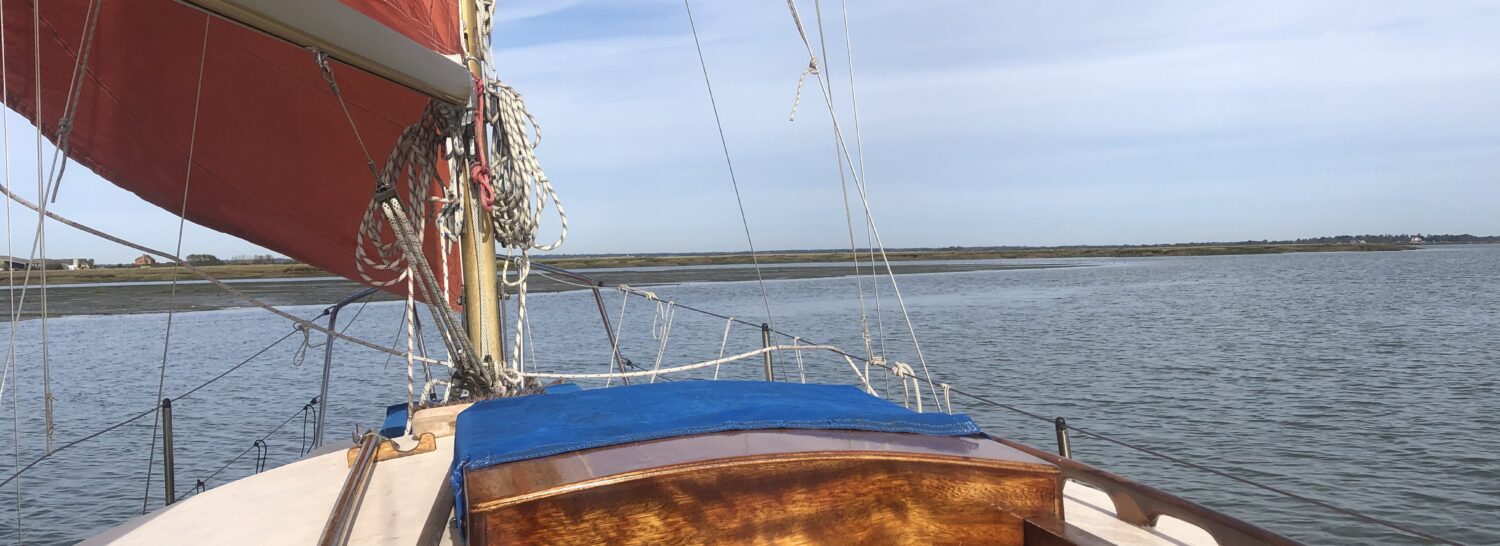A sailing friend, Paul Mullings, and supporter of my books in far off New Zealand, Auckland, to be precise, on the North Island, where he has lived a contented life with his wife for many years.
Paul hailed from Leigh-on-Sea in Essex, England and has always been a friend of the sea and its coastal waters. He has sailed the east coast of England (Thames estuary) and waters around his home, taking in the many inland lakes too. He currently has a trailable Farr.
Paul posted a raft of pictures on his facebook page covering a visit to the Auckland Maritime Museum.
See: https://www.maritimemuseum.co.nz/
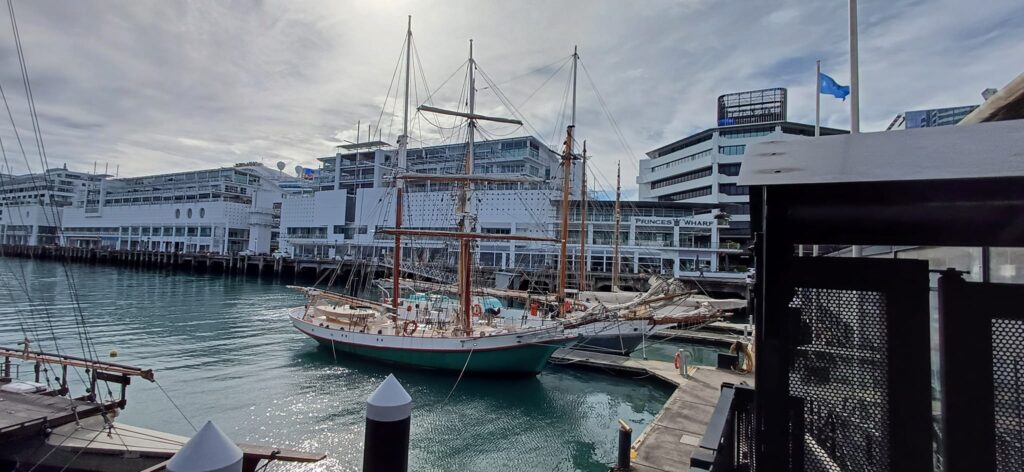
I was struck by the way the museum has mixed static vessels on display as well as a selection that are available to ‘go out on’ and participate in their on board operations.
Now that is something I have not heard of before. In the UK, we have a variety of maritime museums, from the National Maritime Museum (NMM) at Greenwich where a host of antiquities are cared for as well as a few small vessels, to the Maritime Museum of Cornwall which host various craft (none available to take visitors afloat). The NMM has an off-shoot at the Chatham Docks Museum where ship models are displayed.
There are heritage Harbours, but none offer what the Auckland museum has got its head round – a lesson perhaps?
Included within the museum complex is a boat shed built in 1922 by Percy Voss and it is maintained in use for wooden boat building and repair. Is there another lesson here for the rather staid museums in the UK?
In the views above and below, there is a sailing vessel described as a brigantine once used for inter-island trading. She is the Breeze, a modern build of the type and takes people afloat.
See: https://www.maritimemuseum.co.nz/sailings/breeze
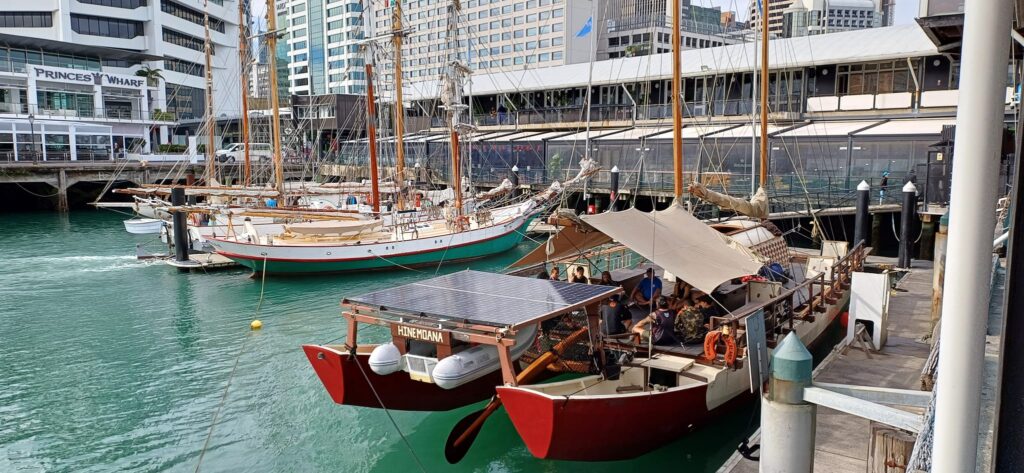
Another vessel which was a trader is the scow Ted Ashby. These vessels did much as the ubiquitous Thames spritsail barge once did and traded the coastal routes and went inland up tidal rivers. Some of these vessels were huge three-masters and traded afar.
I wrote a blog about some NZ old timers years ago – it can be found on the ‘old blog’ page, just down the string. See: https://nickardley.com/old/
See information about the scow:
https://www.maritimemuseum.co.nz/sailings/ted-ashby
Below is a ‘native’ vessel and she looks as if she is ready to depart…
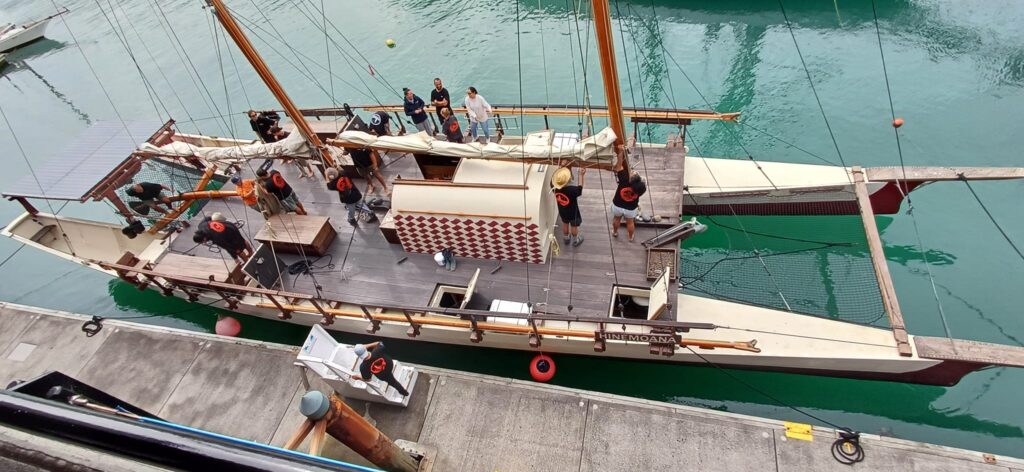
An interesting motor vessel caught my eye. She is the Nautilus, a motor vessel in 1913 in New Zealand. She with another motor boat went aboard a NZ Hospital ship and the boats were used as tenders around Gallipoli – a place synonymous with the people of New Zealand and Australia: many of their forces were lost there.
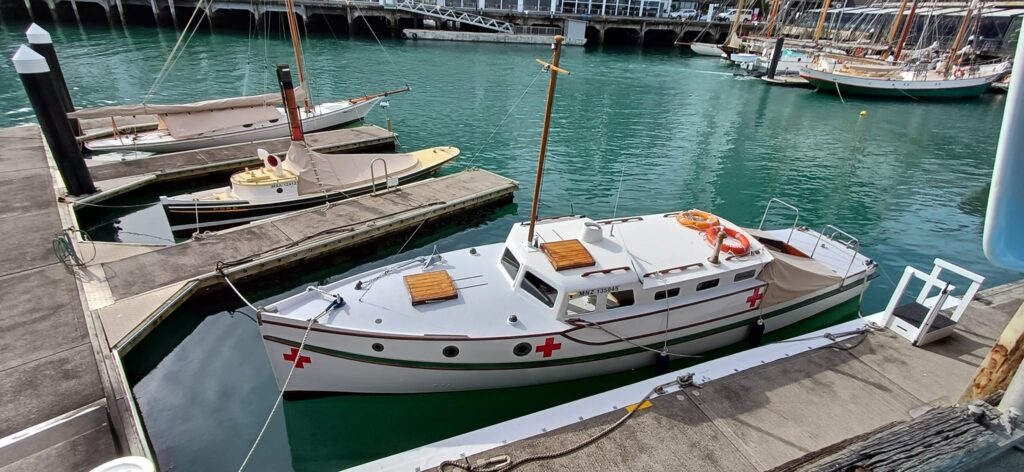
She also is available for trips around the harbour.
See: https://www.maritimemuseum.co.nz/sailings/nautilus
In a covered hall are various small craft.
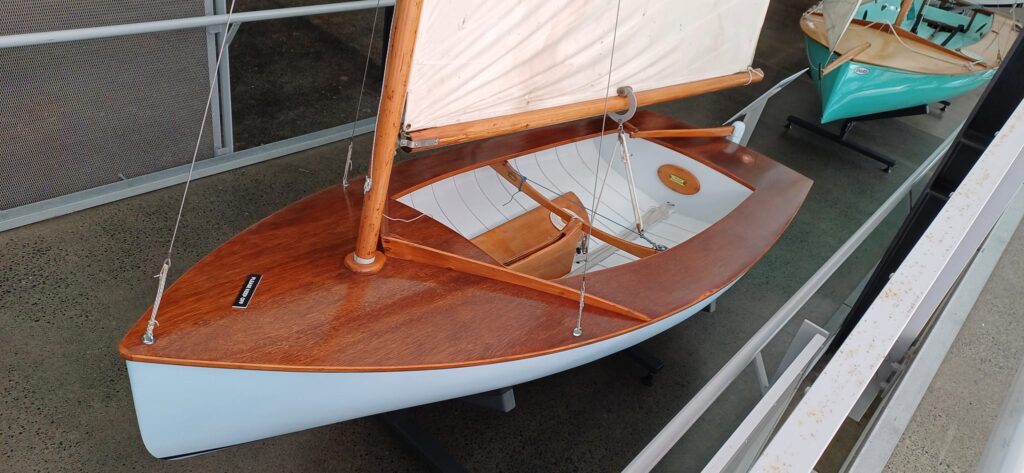
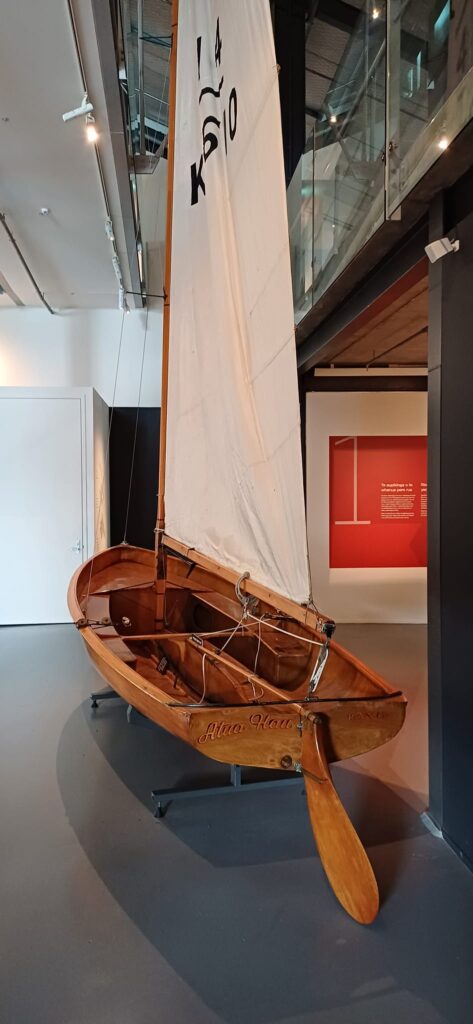
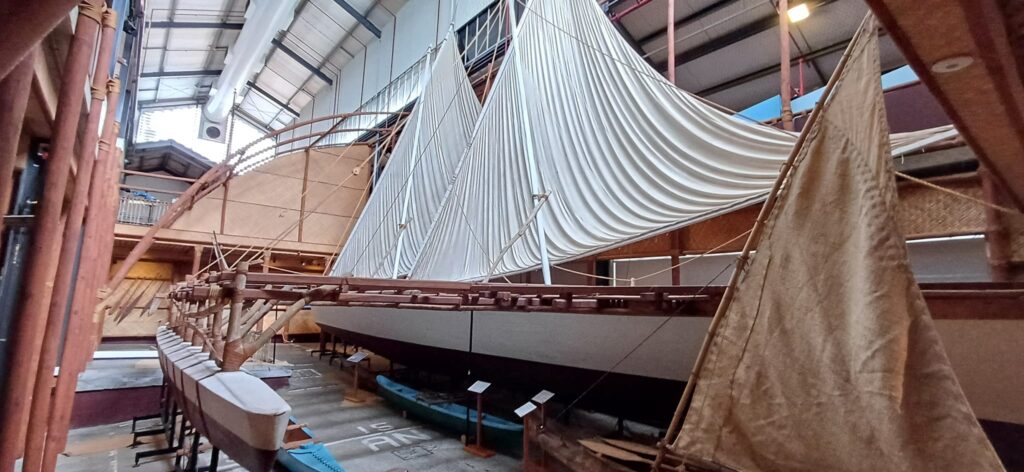
I don’t know much about many of the exhibits for they’re not specifically mentioned within the web site pages.
I am left thinking that I’d love to see these for myself, but it is something very unlikely … so thank you Paul!
I posed a couple of questions. In defence:
UK maritime heritage sites often have open days for vessels under repair, or viewing platforms are erected for ‘Joe Public’ to witness from a safe position works in progress, but what we do not do is have museums carrying out ‘harbour trips’ on historic craft.
Yes, one can hire a Thames sailing barge, say, for a weekend or go on a river trip for these vessels morphed into passenger vessels after trading in solids had ceased.
At Brightlingsea, there is an old smack dock but it tends to be inhabited by ‘old smacks’ closer to heaven than most vessels whilst their resurrected sisters are out in the harbour away from inter-personal contact. Are harbour trips part of the ‘deal’ – no. Its all look from a distance stuff…
So, this is not the same as a live museum where boat building, repair and boat exhibits sits alongside the ability to experience working aboard an ‘oldster’ oneself…
